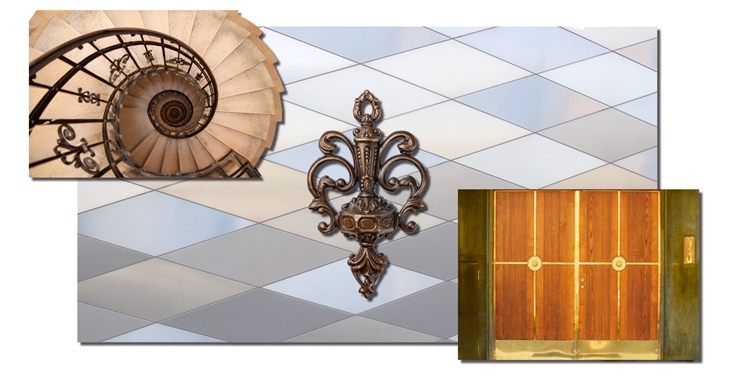
     
  
Bronze in Architecture
Bronze has been known to man since the beginning of the Bronze Age over 5,000 years ago. The Romans were the first to use bronze in cladding of doors and it took until the Middle Ages for bronze to be more
widely used for architectural purposes. There are doors dating back to the 15th century which demonstrates the durability of this material although the majority of buildings that feature architectural bronze windows and doors and other decorative features date from the 18th and 19th century.
No other metals have a range of attractive colors comparable to
copper and copper alloys. The red of copper, the gold of the brasses, the chocolate brown of manganese bronzes and the shiny white nickel silvers enable designers to give full rein to their artistic talents.

CHOOSING COPPER
Copper has earned a respected place in the related fields of architecture, building construction, and interior design. From cathedrals to castles and from homes to offices, copper is used for a variety of architectural elements, including roofs, flashing, gutters, downspouts, domes, spires, vaults, wall cladding, and building expansion joints.
The history of
copper in architecture can be linked to its durability, corrosion resistance, prestigious appearance, and ability to form complex shapes. For centuries, craftsmen and designers utilized these attributes to build aesthetically pleasing and long-lasting building systems.
CHOOSING BRASS
Brass is a metal composed primarily of copper and zinc. Copper is the main component, and brass is usually classified as a copper alloy. The color of brass varies from a dark reddish brown to a light silvery yellow depending on the amount of zinc present; the more zinc, the lighter the color.
Brass in architecture is stronger and harder than copper, but not as strong or hard as steel.
It is easy to form into various shapes, a good conductor of heat, and generally resistant to corrosion from salt water. Because of these properties, brass is used to make weather-stripping and other architectural trim pieces, such as door accessories and railings.
CHOOSING BRONZES
In practice, the term bronze is commonly used for a variety of copper alloys, including those with little or no tin. This is because they resemble true bronzes in both natural and weathered colors.
Nickel-silver alloys C74500 and C79600 are usually called "white bronze"; all others are considered "yellow bronze". "Statuary bronze" and "green bronze" do not refer to specific alloys, but to their naturally weathered or chemically induced colors. The former is used to describe brown to black surfaces; the latter is used for patinas.
Call 800-478-0887 to speak to one of our sales reps or click here to complete our online form.
|













